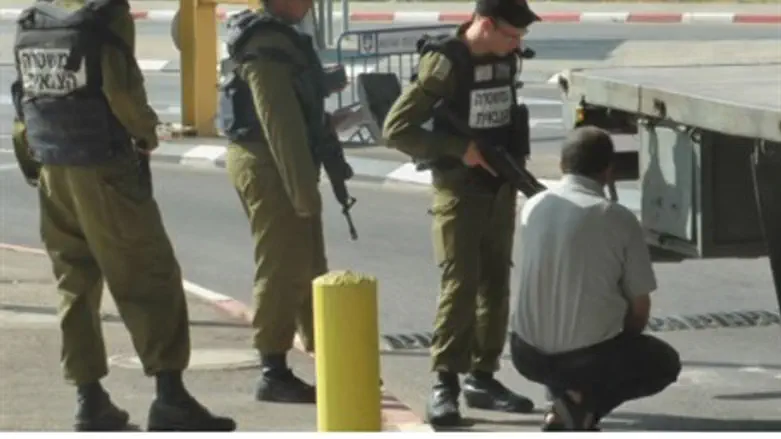
Arutz Sheva’s Kobi Finkler & Yoni Kempinski accompanied the Taoz Battalion of the Military Police, the soldiers of which provide security at 32 crossings in Judea and Samaria (Yehuda and Shomron).
The tour included meetings with the battalion commander and some of the soldiers in the battalion. Arutz Sheva also got to observe as the soldiers inspected a Palestinian Authority Arab.
Lieutenant Colonel Erez Raban, Commander of the Taoz Battalion, explained that the crossings for which the batallaion is responsible “is the last stopping line before a terror attack enters Israel”, emphasizing that the crossings are the soldiers’ “personal responsibility, and the key to the battalion’s success is the expression personal responsibility.”
He explained, “The art of inspection is made up of two situations. In any situation in which we have to inspect, we prefer to carry out an ‘AA inspection’, or inspecting one by one. I prefer to inspect person by person, vehicle by vehicle, to carry out disassembly and assembly. That’s what guarantees that I will fulfill my responsibility to ensure that this vehicle is clean of any objects, people or means of terrorism.
“In a situation where there is too big of a load, where there is a high volume of traffic and I cannot carry out AA inspection, I move on to an inspection method called ‘The Four Stages’,” said Raban. “The four stages include visual inspection of the vehicle, looking for suspicious signs. If it doesn’t pass the visual inspection we move on to the second stage which is a stage of asking questions: Where are you from? Where are you going? Etc. I look for suspicious behavior. The third stage is inspecting the driver’s documents, and the fourth stage, if he didn’t pass the previous stages, is disassembly and assembly of the vehicle.”
The tour included a visit to one crossing in which there is no direct between any PA Arab trying to cross and the inspecting soldier. The inspection takes place in a sealed building which is explosion-proof.
“The Palestinian, the moment the magnetometer beeps, walks back and forth until he’s cleared,” explained Raban. “He gives his ID card to the soldier without hand contact. The soldier who receives the ID card enters it into the computer system, checks that he has a permit, checks to see whether there is a warning about him by Israeli intelligence, checks that he’s not wanted, because if he’s wanted he’ll be immediately trapped inside until he’s picked up. And there’s no direct contact between them. We use technology to minimize contact. There’s no physical contact here.”